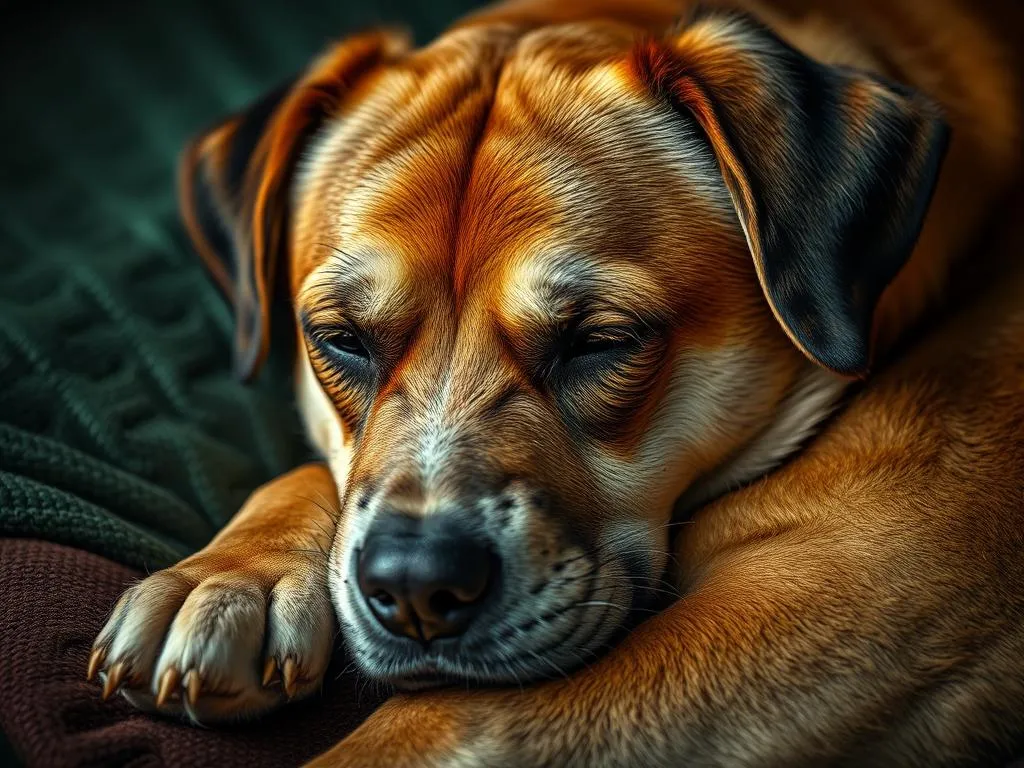
Introduction
As pet owners, we often find ourselves puzzled by our furry companions. One particularly curious behavior is when our dogs cry in their sleep. Why do dogs cry in their sleep? This question not only intrigues dog lovers but also highlights the importance of understanding canine behavior during sleep. Sleep is a significant aspect of a dog’s life, and knowing more about it can help us better care for our pets.
In this post, we will explore the complex world of dog sleep, the reasons behind this crying behavior, and how we can create a more restful environment for our beloved pets. Understanding why dogs exhibit this behavior can improve our relationship with them and ensure their overall well-being.
Understanding Dog Sleep Cycles
The Stages of Dog Sleep
Dogs experience sleep in cycles, much like humans. However, their sleep structure is different. A typical dog has both REM (Rapid Eye Movement) and non-REM sleep stages. During REM sleep, dogs may dream, which often leads to various physical responses, including crying, twitching, or even barking.
Dogs generally spend about 12 to 14 hours a day sleeping, with sleep cycles lasting around 20 to 30 minutes. In these cycles, they alternate between REM and non-REM sleep. Understanding these stages is crucial for pet owners, as it helps decipher the behaviors exhibited during sleep.
How Dog Sleep Differs from Human Sleep
While humans typically experience around 90 minutes of REM sleep per cycle, dogs have shorter REM intervals. This means that dogs can fall into dreaming states more frequently throughout their sleep. Additionally, dogs tend to sleep more during the day and may be more active during the night, depending on their owner’s schedule.
Recognizing these differences can help owners appreciate their dog’s unique sleep patterns and the importance of quality rest for canine health.
Common Reasons Dogs Cry in Their Sleep
Dreams and Nightmares
One of the most common reasons dogs cry in their sleep is due to dreaming. Just like humans, dogs experience dreams during their REM sleep. When dogs dream, they may relive experiences, play, or even interact with other animals.
Signs that a dog is dreaming include twitching, paddling of the legs, and vocalizations such as whimpering or whining. If your dog seems relaxed and is exhibiting these behaviors, they may simply be having a pleasant dream.
Physical Discomfort
Another reason dogs cry in their sleep could be related to physical discomfort. Older dogs or those with underlying health issues may experience pain while sleeping, which can manifest as crying. Conditions such as arthritis or injuries can lead to discomfort that disturbs their sleep and results in crying.
To identify if a dog is in pain or distress, pet owners should look for other signs such as restlessness, changes in appetite, or reluctance to engage in normal activities. If these symptoms are present, it is essential to consult a veterinarian.
Anxiety and Stress
Anxiety and stress can also disrupt a dog’s sleep, causing them to cry. Factors such as changes in the household, loud noises, or separation anxiety can lead to heightened stress levels in dogs. Signs of anxiety can include excessive barking, destructive behavior, or pacing.
If a dog is crying in their sleep due to anxiety, addressing the root cause of the stress is crucial. Creating a calm environment and providing reassurance can help alleviate anxiety and promote better sleep.
Breed-Specific Behaviors
Breeds Prone to Crying in Sleep
Some breeds are more prone to exhibiting crying behavior during sleep than others. Breeds such as Dachshunds, Beagles, and Chihuahuas are known for their vocal tendencies, which can translate to crying or whining in their sleep.
Genetic factors significantly influence sleep behavior. For instance, breeds that were historically bred for hunting may have heightened dreaming, as they often dream about chasing prey. Understanding breed-specific behaviors can give owners insight into their dog’s nighttime habits.
Case Studies of Crying in Specific Breeds
Anecdotal evidence suggests that certain breeds exhibit more frequent crying during sleep. For example, Beagles are known to be vocal and may often cry due to their high energy levels and playful nature. Similarly, Dachshunds, known for their strong personalities, might cry out in their sleep as they dream about their adventurous exploits.
Research into specific breeds can provide more clarity on why certain dogs may cry more than others, helping owners to better understand their pets.
How to Address Crying in Dogs
Creating a Comfortable Sleep Environment
Ensuring that a dog has a comfortable sleep environment can significantly reduce crying during sleep. Here are some tips for optimizing a dog’s sleeping space:
- Bedding: Invest in a high-quality dog bed that provides adequate support and comfort.
- Location: Choose a quiet location for the bed, away from household traffic and noise.
- Temperature: Ensure that the sleeping area is at a comfortable temperature, avoiding extremes.
By creating a sanctuary for rest, dogs are more likely to experience peaceful sleep, reducing the chances of crying.
Establishing a Calming Routine
Establishing a calming routine before bedtime can help dogs relax and promote better sleep. Here are some techniques to consider:
- Consistent Schedule: Stick to a regular bedtime routine to signal to your dog that it’s time to wind down.
- Gentle Exercise: Engage in light exercise before bedtime to help expend excess energy.
- Calming Techniques: Consider using calming products such as pheromone diffusers or anxiety wraps to ease stress.
Incorporating these practices can significantly improve a dog’s sleep quality and reduce the likelihood of crying.
When to Consult a Veterinarian
If a dog frequently cries in their sleep, it may be time to consult a veterinarian. Signs that professional help is needed include:
- Persistent crying or whining during sleep.
- Exhibiting signs of pain or discomfort when awake.
- Sudden changes in behavior or sleep patterns.
Common medical conditions linked to sleep disturbances may require professional assessment and treatment. Addressing any underlying issues can improve a dog’s overall quality of life and reduce nighttime disturbances.
Myths and Misconceptions About Dogs Crying in Their Sleep
Debunking Common Myths
There are several myths surrounding why dogs cry in their sleep. One common misconception is that dogs are simply mimicking their owners’ behaviors or emotions. In reality, dogs have their own unique experiences and emotions that influence their dreaming and sleep patterns.
Another myth is that dogs cry due to a lack of training or discipline. While training is essential for a well-behaved dog, crying in sleep is often a natural response to dreams, discomfort, or anxiety, rather than a behavioral issue.
Understanding the Realities
Scientific insights provide clarity on the realities of dog behavior during sleep. Research indicates that dogs experience REM sleep similarly to humans, which means they are capable of dreaming. This highlights that crying during sleep can often be a normal part of their sleep cycle rather than an indication of distress or behavioral problems.
Understanding these realities can help pet owners approach their dog’s sleep behavior with empathy and knowledge.
Conclusion
In summary, why do dogs cry in their sleep? The answer lies in a combination of factors, including dreaming, physical discomfort, and anxiety. Understanding dog sleep cycles and recognizing the unique behaviors exhibited during sleep can enhance the bond between pet owners and their furry friends.
By creating a comfortable sleeping environment, establishing a calming routine, and being vigilant for signs of distress, we can help our dogs enjoy peaceful and restorative sleep. As responsible pet owners, taking the time to observe our pets and seeking professional advice when necessary is crucial for their health and happiness.
In the end, our dogs rely on us to ensure they have the best possible quality of life, both awake and asleep.









